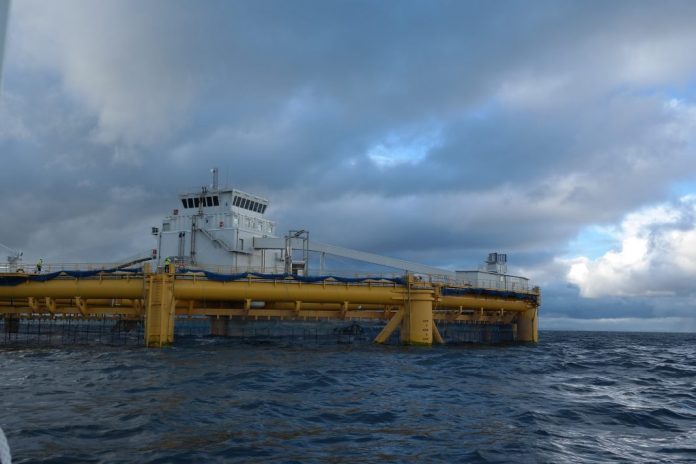But aquaculture in the open sea may require a new licensing regime.
It was the combination of the offshore and fishery component that was interesting for the Kongsberg group to participate in the development of SalMar’s fish farm “Ocean Farm 1”. The salmon farmer’s first generation of salmon was harvested in January, from its location off the coast of Norway.
The big leap, however, will be with “Smart Fish Farm”, which will be twice as large as “Ocean Farm 1” when it will be hopefully launched in 2022. It will be located in the open sea, using DP i.e. dynamic positioning, which has been absolutely crucial for being able to carry out oil production at sea.
Revolution
“These are big words, but then we are talking about a revolution when we use open sea areas,” Thor Hukkelås said.
Hukkelås is the director of BD Aquaculture in Kongsberg Maritime, and is a graduate engineer in technical cybernetics. Kongsberg Maritime is a technology enterprise that delivers systems for positioning, surveying, navigation and automation to merchant vessels and offshore installations. It’s one of the four wholly owned subsidies of the Kongsberg Gruppen. Kongsberg Defence Systems is probably best known for its development and production of the first passive IR homing anti-ship missile of the western world, the Penguin.
“Ocean farm 1” is 110m in diameter and has a volume of 245,000 cubic metres. It can hold 1.6 million fish of 5 kilos.
“We have delivered just about everything that is of automation and instrumentation-related to that rig. There are 16 places one can feed underwater,” explained Hukkelås during EWOS ‘annual conference at Solstrand Hotel, just outside of Bergen, Norway.
New licensing regime
“Mathematical formulation is the form of expression of cybernetics. Sensors collect data, which is run into a mathematical model, to see how fish react to stimuli and surroundings. The goal is to get automatic feeding, where we can take the best feeder on SalMar and put it into all sites,” he added.
Hukkelås spots unprecedented opportunities by taking salmon farming to the seas.
“Norway needs a completely new license regime for growth when we go out into the ocean. “Ocean Farm 1″ received eight licenses. Repeating this will require one and a half billion kroner (EUR 150 million) – in addition to construction costs of NOK 700 million (EUR 70 million),” he pointed out.

